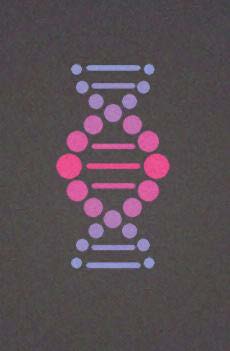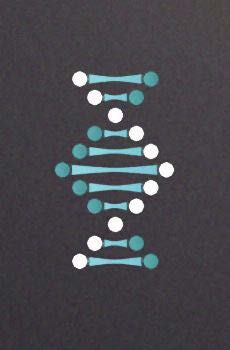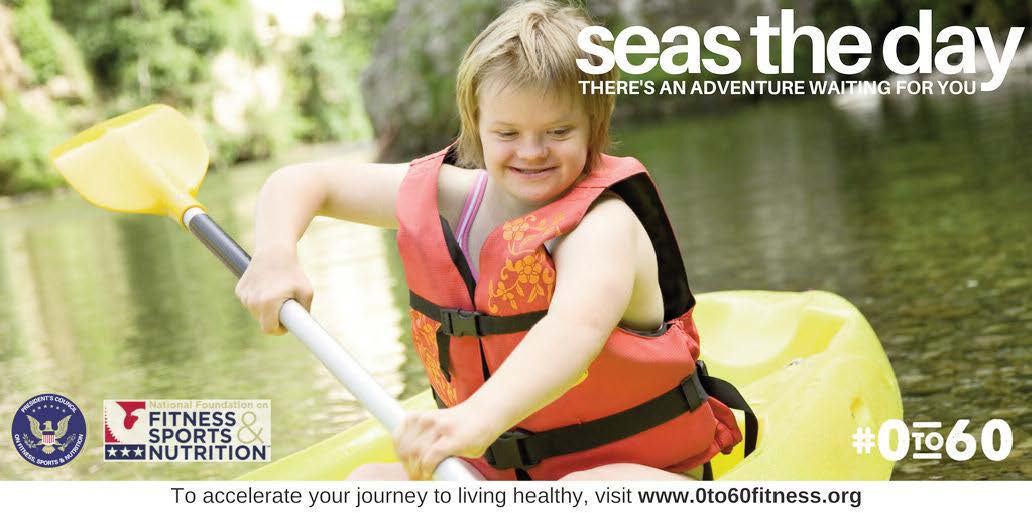The Internet is a revolutionary tool that allows everyday people to engage in global conversations and experience an entire network of information at their fingertips. The Internet is a limitless string of materials that can explain problems and help find solutions for individuals who may not otherwise have the resources they need.
B ut with all the good, all the change, all the conversations in this day and age, there is almost too much information available to the general public. The average person is so overtly bombarded with information that it is often a struggle for them to find high-quality, accurate, and informative resources to help them solve their problems or answer their questions. The objective of this guide is to aggregate the best, most valid resources for families looking to learn more on biology, genetics, genetic testing, and genetic diseases. These resources stem from international and national health agencies, hospital systems, and health advocacy organizations. They are backed by the latest science-based evidence available and range from beginner guides on the subject to technical, complex discussions. This guide may serve as a starting point for all families exploring these topics.
A common struggle most people face is determining whether an online resource is legitimate or not. Instead of wasting time and resources researching the reliability of different resources, there is a quick and easy way to find the best sources. When searching for information online, here are three things to look for:
1.The first step is determining what is the source. Who wrote the article? What experience or expertise do they have in this field? By answering these two questions, one should be able to determine whether the author is reliable. It is also important to remember that some sources may be written by an organization instead of a single author.
2.The second step is checking the date of publication or last modification. When was this article written? When was it last updated? The more recent the article, the more relevant the information. Resources from several years ago may not be false or unreliable, it just may be out of date. Science is a rapidly evolving field, meaning there are constantly new breakthroughs.
3.The third and last step is to find where the information came from. This means learning where the author/s got their information from. Was it a scientific study or is it someone's opinion? Most articles based in science will reference the studies either within the article or at the end in the references section. Beware of opinion pieces as they often cite biased sources or no sources at all. By following these three steps, one can easily verify the legitimacy and reliability of online resources.
UNDERSTANDING BIOLOGY AND GENETICS
The resources in this section are an excellent starting place for families looking to learn more about the basics of genetics. This collection of resources helps explain the biology behind genetic diseases, including inheritance, effects on the body, and reactions to treatment. Several of these resources have pages dedicated to individual diseases and conditions, giving families the chance to learn more about certain conditions.
Genomics Home Reference National Institutes of Health (NIH)
The NIH is a United States government agency that deals with biomedical and public health research. It is on the front lines of genetic research and helped fund the Human Genome Project, which led to the mapping of all human genes. From here, parents can search through over 1,200 health conditions/diseases/syndromes, over 1,400 genes, all 22 chromosomes and the two sex chromosomes, and learn about mitochondrial DNA. Two of the most important features are the "Help Me Understand Genetics" section, which breaks down the science behind genetics, inheritance, testing, therapy, etc., and the "Resources" section that can help families find genetic counselors, research trials, databases, and more.
National Human Genome Research Institute National Institutes of Health (NIH)
This is another resource from the NIH. This website explains genetics and genetic disorders, details the latest scientist findings, and provides tools for people to create their own family health histories. It has several frequently asked questions sections that cover less discussed topics such as disease prevention and rare and neglected diseases. It also has advice for people living with undiagnosed conditions.
Genes in Life Genetic Alliance
Genes in Life is a program within Genetic Alliance, a health advocacy organization that focuses on transforming health through genetics. The goal of this site is to act as a starting place for families who want to learn more about genetics. Here, people can learn about what genetics is and how it can affect themselves and their families. It includes information on genetic testing, offers advice on what to do after being diagnosed with a genetic condition, and explains how people can get involved with clinical research studies.

Learn.Genetics Genetic Science Learning Center
Learn.Genetics is run out of the University of Utah, which has its own Department of Human Genetics. This site was developed to share multimedia educational materials on genetics and human health. There is a broad "Family Health History" section that explains what genetic risks are and how to be aware of them. The content on this site may be too scientific for some, but it does have comprehensive sections that explain genetic disorders, epigenetics, and gene therapy.
How Genetic Disorders Are Inherited Mayo Clinic
Mayo Clinic is a nonprofit medical group the runs the highest ranked hospitals in the United States and conducts medical research. This resource is a short slideshow that gives a visual presentation of what genes and chromosomes are and how they can be passed down from parent to child. This resource will be particularly useful to people who are visual learners.
GENETIC TESTING
Genetic testing is a topic that will come up in almost every parents' life. Before conceiving, couples are asked to discuss their family health histories with each other or even consider preconception genetic testing. During pregnancy, women are asked about prenatal genetic testing, which can determine if a baby will have a certain genetic condition such as Down syndrome. After a child is born, it goes through the newborn screening process, where it is tested for several conditions, many of which are genetic. This section is to teach families more about the genetic testing process, including the how and why diseases are diagnosed. Here, parents can find important information around genetic testing before conceiving, newborn screening, and resources on how to find a genetic counselor.
Should You Screen Your Genes Before You Conceive? WebMD
WebMD is often one of the first websites that appears when one googles a medical issue. It is curated by medical doctors and journalists and seeks to provide people with easy to understand medical information. This particular webpage discusses genetic testing for couples considering pregnancy. It explains the testing process, the pros and cons of testing, and suggests for certain at-risk populations to be tested for specific disorders and diseases before conceiving.
Newborn Screening Portal The Centers for Disease Control and Prevention (CDC)
The CDC is the United States' top public health institute whose goal it is to prevent and control diseases. The CDC created this portal to provide parents and healthcare providers with information, resources, and tools on newborn screening. The information found here is more technical, so it may not be the best first stop for people wanting to learn about the basics of newborn screening.
What is Newborn Screening? The Centers for Disease Control and Prevention (CDC)
Baby's First Test is the nation's clearinghouse on newborn babysfirsttest.org screening. Its website is an excellent first resource for expecting and new parents who are curious about the newborn screening process. Baby's First Test gives an overview of what newborn screening is, how a baby is tested, and information on living with genetic conditions. There are resources and tools in English and Spanish for parents and health professional alike.
National Society of Genetic Counselors (NSGC)
NSGC is a network of genetic counselors. This site is a source of information, resources, and tools all pertaining to genetics. One of the largest tools on this site is the "Find a Genetic Counselor" section that helps connect families with genetic counselor in person or over the phone. Families can also find answers to many common questions surrounding genetics, testing, and counseling in the "Patient Resource" section.

GENETIC DISEASES
This section will be particularly useful to families that already have a diagnosis or are waiting on one. These resources will connect parents with some of the world's leading disease research and advocacy organizations. Here, parents can learn more about living with genetic disorders, rare and undiagnosed diseases, and ongoing genetic research.
Genomic Resource Centre World Health Organization (WHO)
The WHO is an international public health agency within the United Nations. This Centre gives a quick overview of genetics and then goes into describing the difference between chromosomal and monogenic disorders. It also discusses the affects communicable and noncommunicable diseases can have on one's genes. Since it is an international organization, the WHO provides resources for people who live in America and abroad.
National Coordinating Center for the Regional Genetics Networks (NCC)
NCC aims to bring genetic screening services to communities around the country. Its goal is to improve newborn genet ic screening services and help provide families with the information, resources, and care they need. People are able to search for genetic information and resources by region on this site.
Undiagnosed Diseases Network (UDN)
The UDN is a research study funded by the NIH that brings together scientists to find cures for undiagnosed diseases. People can apply to become participants in the UDN study. If selected to be a participant in the study, the UDN will connect the participant with a clinical site where samples will be taken. Those samples will then go on to the UDN whose goal it is to find a diagnosis. Signing up for a UDN study can be a viable next step for families struggling to find a diagnosis for a genetic disease.
National Organization for Rare Diseases (NORD)
NORD is an advocacy organization for patients with rare diseases. The information on this website is separated into sections for patients, organizations, industry, and clinicians and researchers. Online, one can find information on over 1,200 rare diseases, as well as organizations, resources, and other important information relating to those diseases.
Genetic and Rare Diseases Information Center (GARD)
GARD is a program within the NIH whose goal it is to provide the public with easy to understand and accessible information on genetic and rare diseases. GARD helps people research their diseases and find advocacy organizations. It also has a toolkit for encouraging people to get involved with clinical trials.
Global Genes
Global Genes is an international rare disease patient advocacy organization based out of the United States. The organization produces numerous toolkits that provide families and people with information on less discussed topics, such as "Parenting a Child with a Life-Limiting Illness," "Navigating Emotions: A Guide for Teenagers with Rare Diseases," and "Taking Control: Optimizing Your Potential as a Young Adult with a Rare Disease."
Disease InfoSearch Genetic Alliance
Disease InfoSearch is another tool from Genetic Alliance. It is a database with information on over 13,000 diseases. For each disease, the database is able to aggregate information around symptoms, diagnosis, and treatment, advocacy and support groups, common questions, recommended apps, scientific literature, and ongoing clinical trials.

It is essential for families to remember that more information does not always equal more clarity. This is why it is necessary that every internet user seeks out high-quality information that is written by experts and supported by the latest scientific research. It should also be noted that though these resources are a great starting point for families, they should not be the only resources used when navigating the world of genetics. Parents should always consult with their pediatricians and other members of their medical team for any outstanding questions they have. Doctors, nurses, and genetic coun selors can help link families with local resources and provide more in-depth explanations.
ABOUT THE AUTHOR: Jordan Capizola is a Program Coordinator at Genetic Alliance, where she works on the Expecting Health team. In her role, she develops stakeholder engagement tools, drafts research materials, manages website content, and researches new findings in maternal and child health. Jordan graduated from the George Washington University with a B.A. in International Affairs with concentrations in International Politics and Global Public Health.
